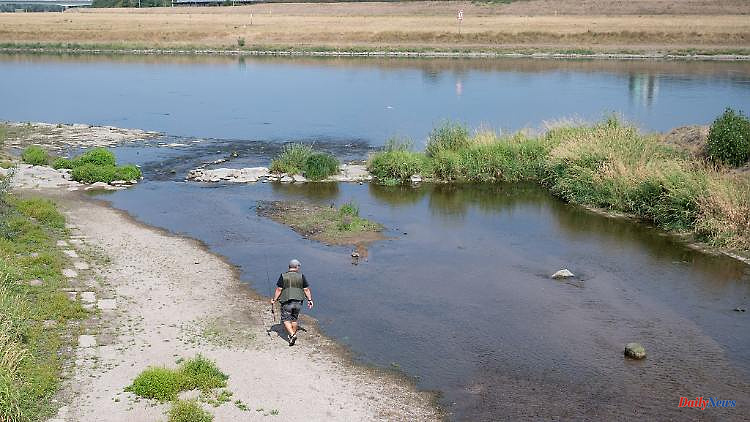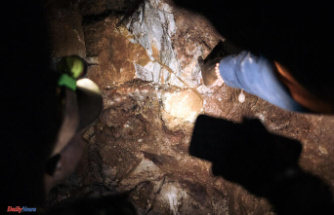Fish are dependent on water, but long periods of drought mean that streams and rivers in Saxony increasingly become rivulets or fall completely dry. Rising water temperatures also put fish in distress. Renaturation could bring some relief.
Dresden/Neukirchen (dpa/sn) - The long drought and heat are affecting the fish in Saxony's rivers. A lack of precipitation in recent weeks has not only caused the rivers and thus the habitat to shrink badly. With the increase in water temperatures, the oxygen content in the water also decreases, said the head of the fisheries department at the State Office for the Environment, Gert Füllner, of the German Press Agency. Above all, cold-loving fish species such as brown trout, minnow, bullhead, grayling and brook lamprey suffered.
"Actually, nature is adapted to such situations," explained the expert. If streams and rivers are close to nature, they provide sufficiently deep scours into which the fish can withdraw, even during periods of drought and heat. However, many rivers have been straightened and obstructed, so there are no natural retreats. Fuller speaks of "highways for the water".
Ralf Bretfeld from the Südsachsen Mulde/Elster Anglers' Association in Neukirchen near Chemnitz also describes such negative effects of human intervention. If the rivers were free to flow, they would warm less, he said. A backwater forms at weirs, in which the water is largely still. This not only creates additional evaporation surfaces, but also heats up the water more. On the Zschopau alone there are 40 dams from Wiesa to Frankenberg, the expert explained.
Added to this is the lack of precipitation, which has been going on for several years. In extreme cases, streams or rivers will even run dry. That happened this year on a section of the Würschnitz, where fish also died, said Bretfeld. The Zschopau also carries very little water. In Lichtenwalde it was recently only around 2500 liters per second, normal is 20,000 liters. This is not an isolated case. In the past few weeks, the state flood center has reported low water levels on Saxony's rivers across the board.
The Black Elster north of Hoyerswerda, with its dead-straight course, also repeatedly dries up, added fishing expert Füllner. A positive example, however, is the Kirnitzsch in Saxon Switzerland. It is a near-natural river and offers the fish places that are several meters deep, he explained. The renaturation of the Spree in the Oberlausitzer Heide- und Teichlandschaft biosphere reserve is also having a positive effect. Here, a once straightened section has been transformed back into a meandering river. This not only benefits the fish, but also brings advantages for flood protection.
A major fish kill has not been observed this summer, despite the heat and widespread low water in the rivers, as Fuller said. "If such a situation occurs for several years in a row, it can be expected that it will affect fish stocks." When the rivers shrink and the fish concentrate in the remaining rivulets and puddles, predators would have an easy time, too. "Then the table is richly set for the heron and the otter." Young fish are then also more at the mercy of predatory fish.












